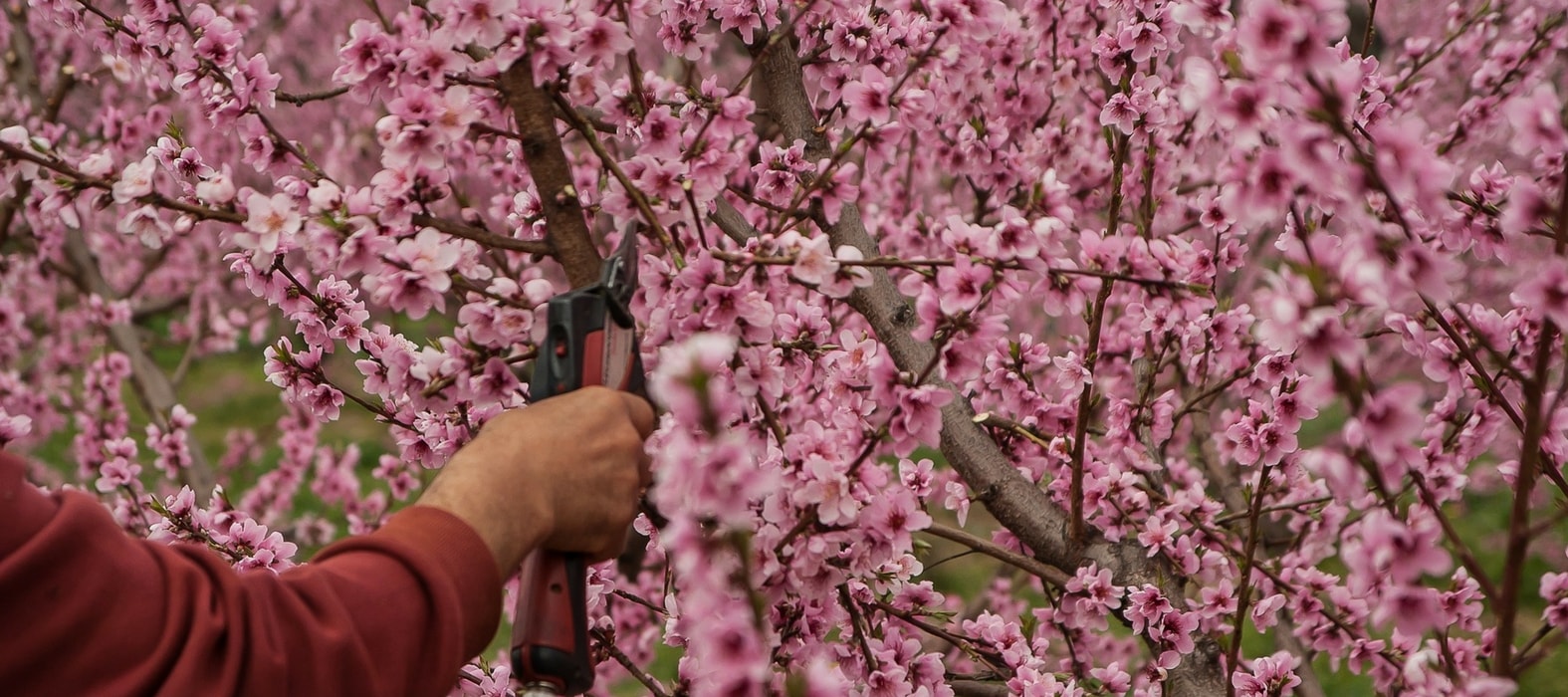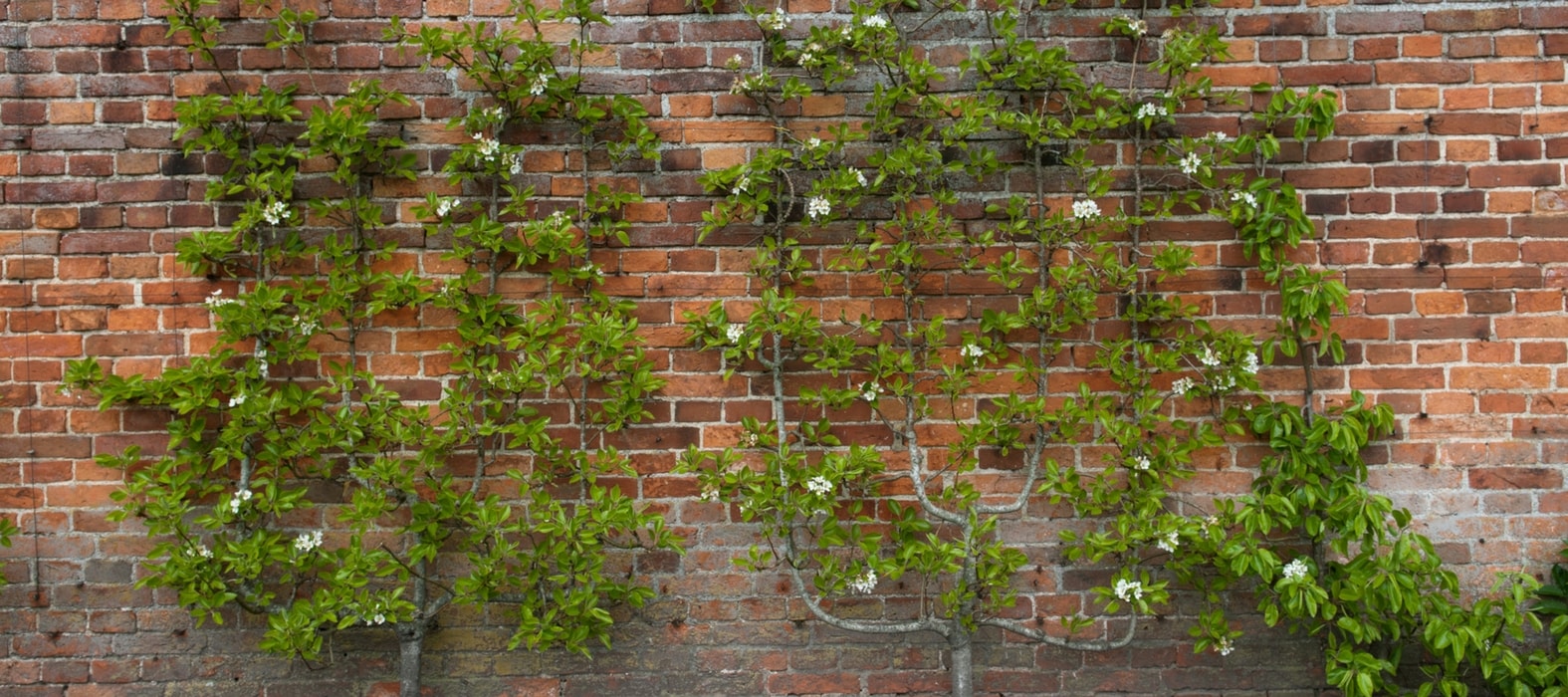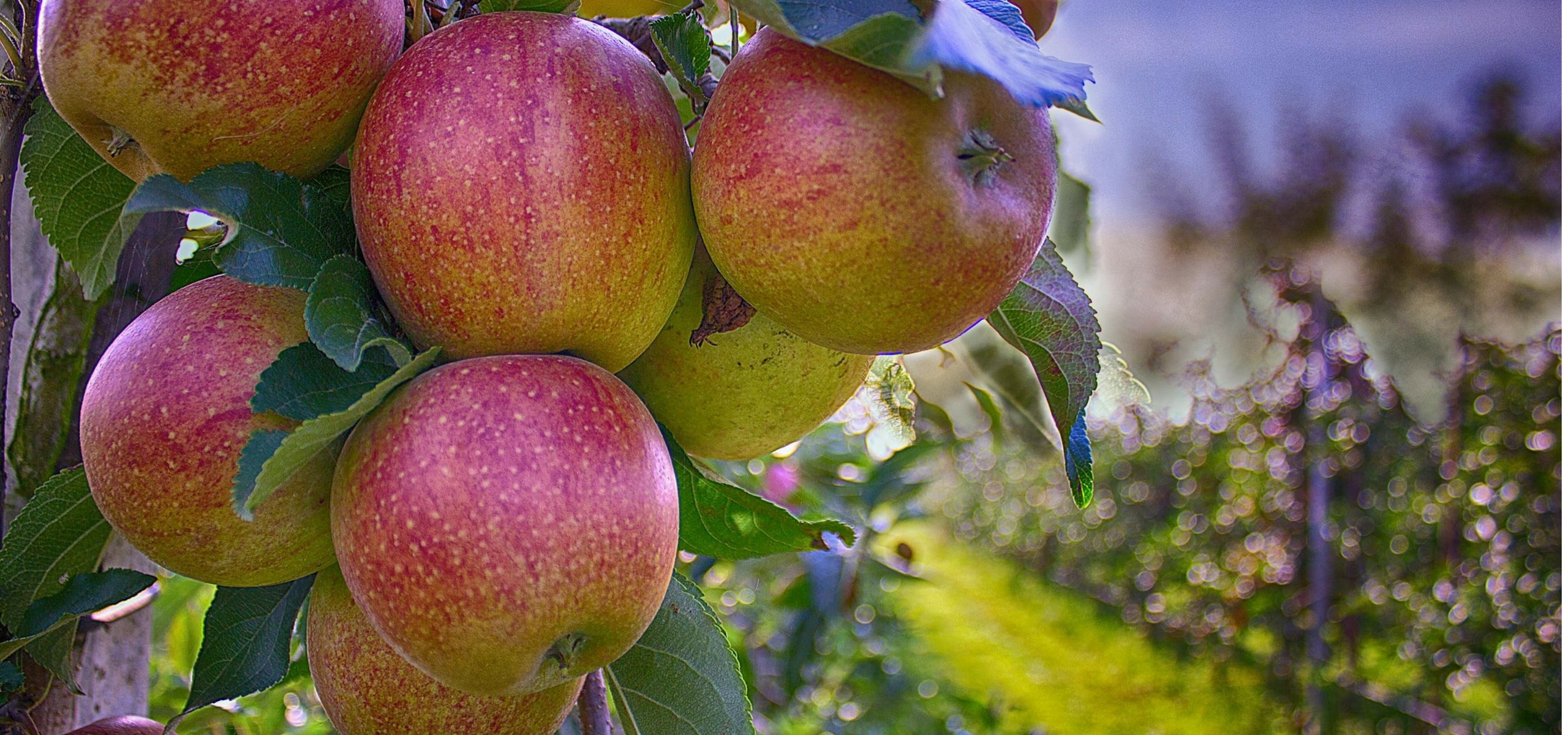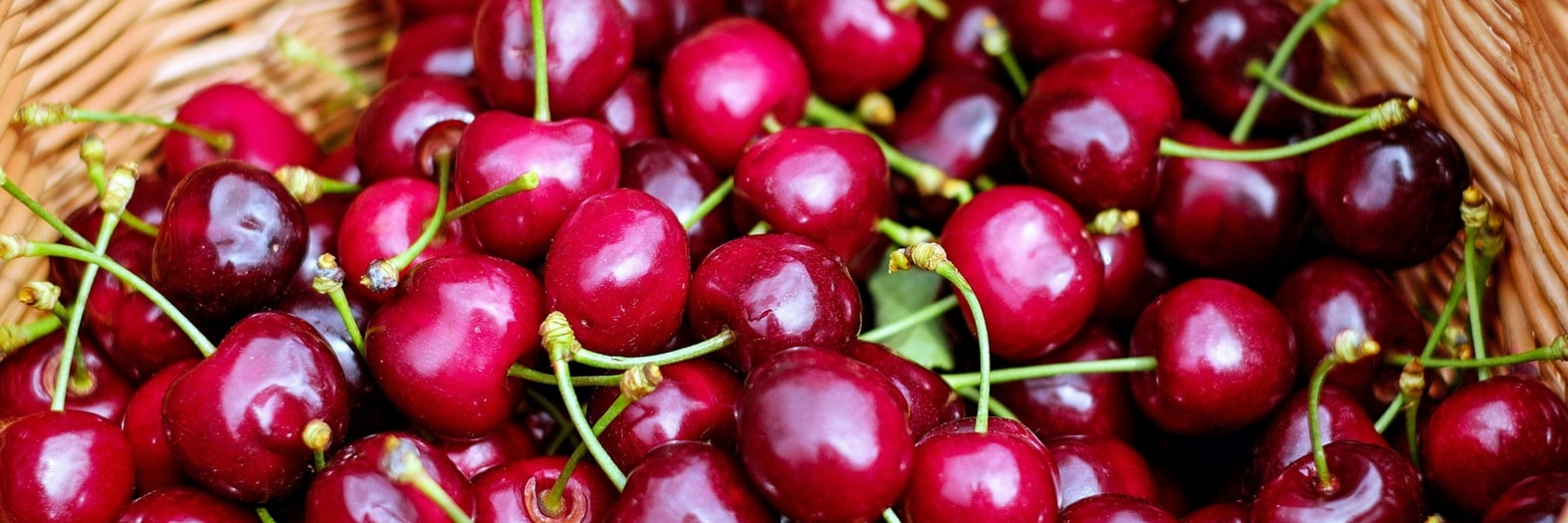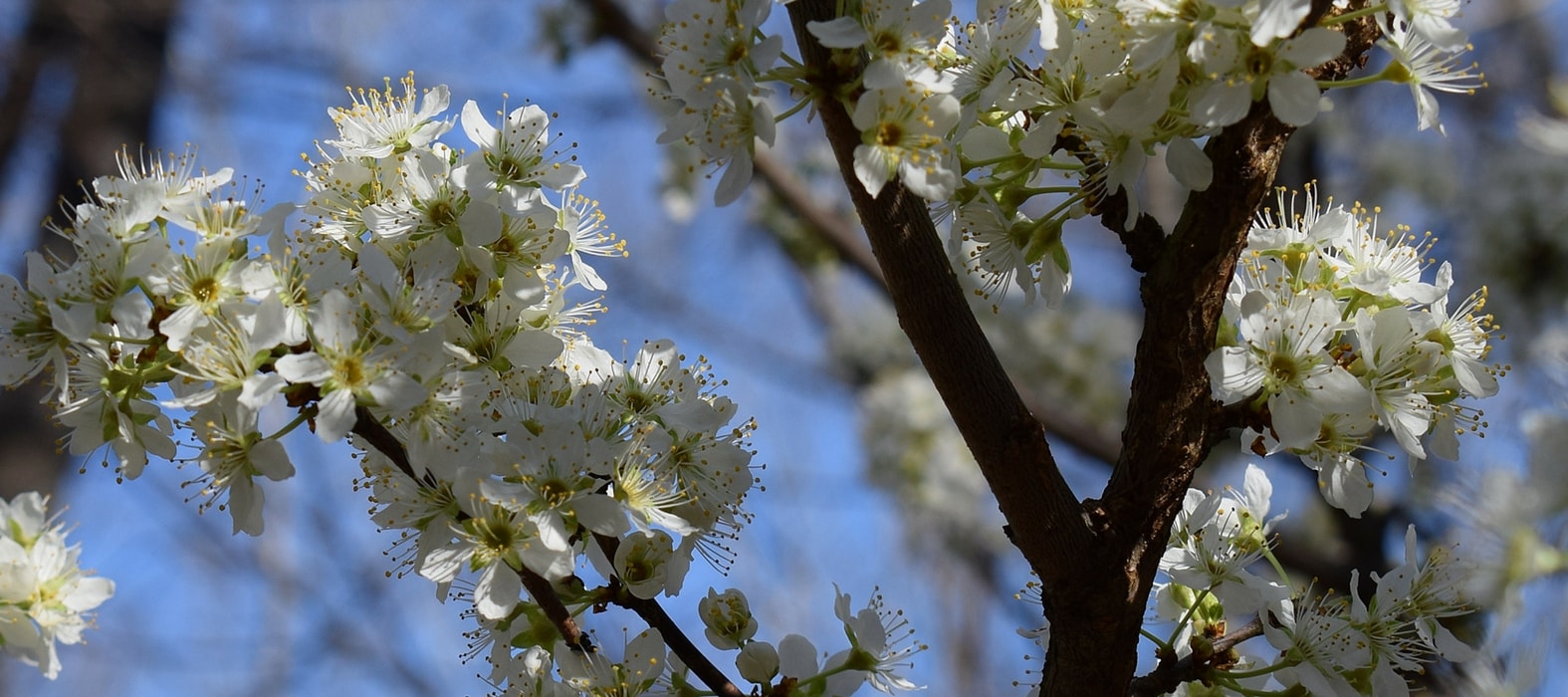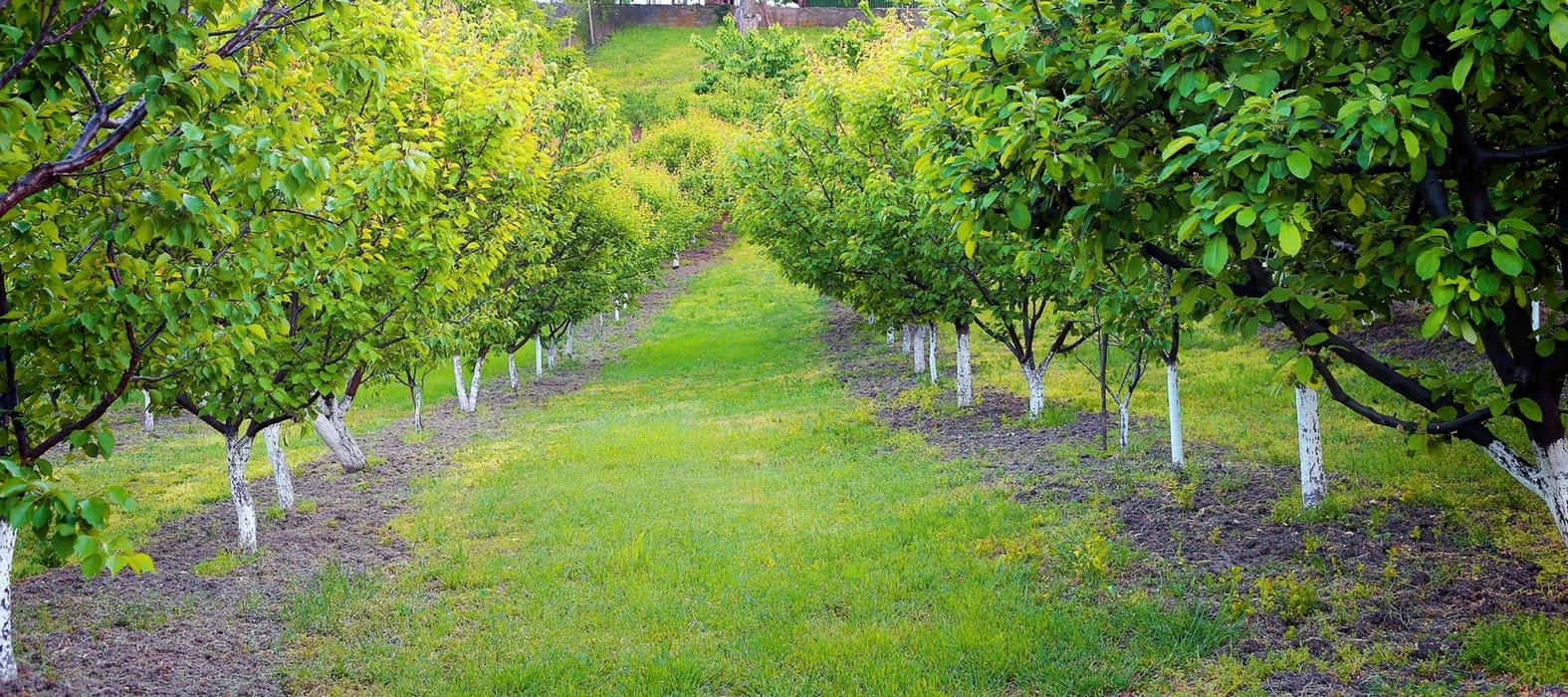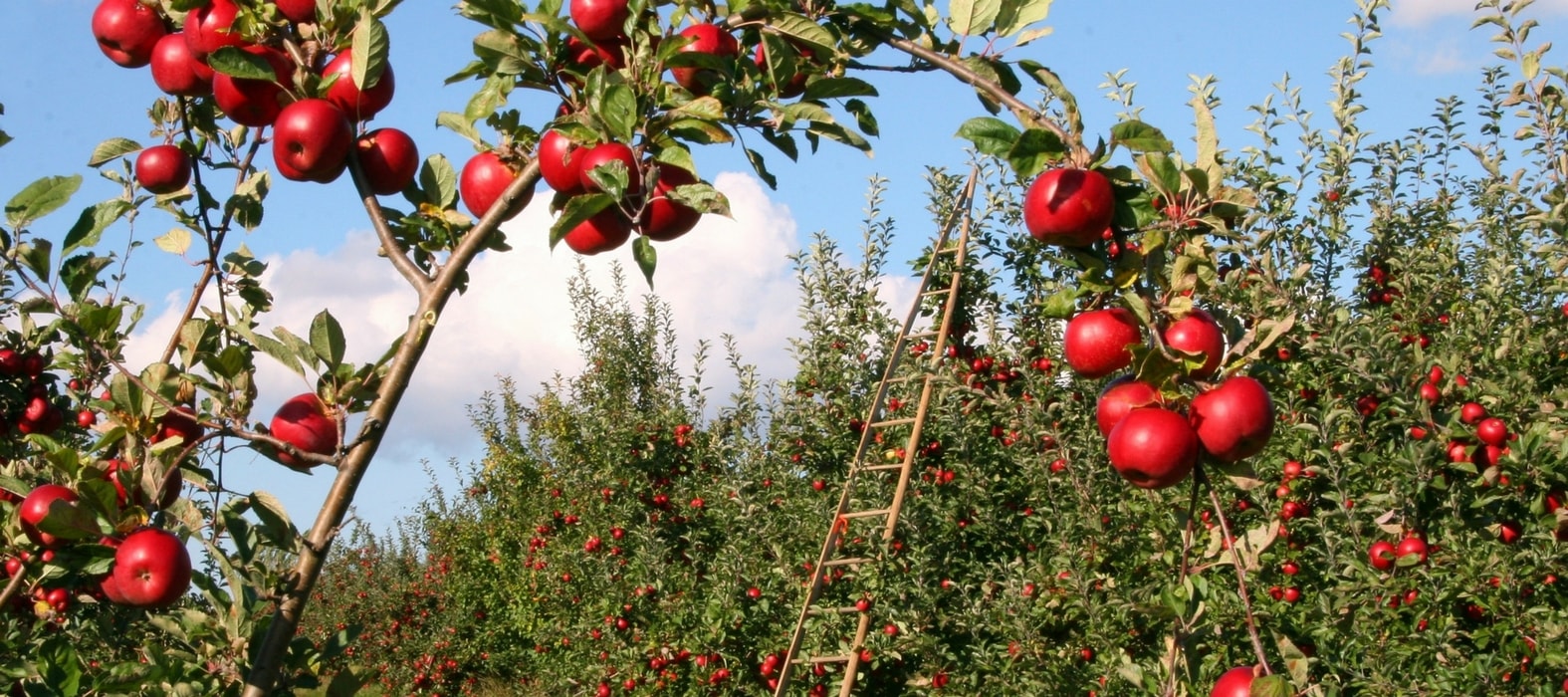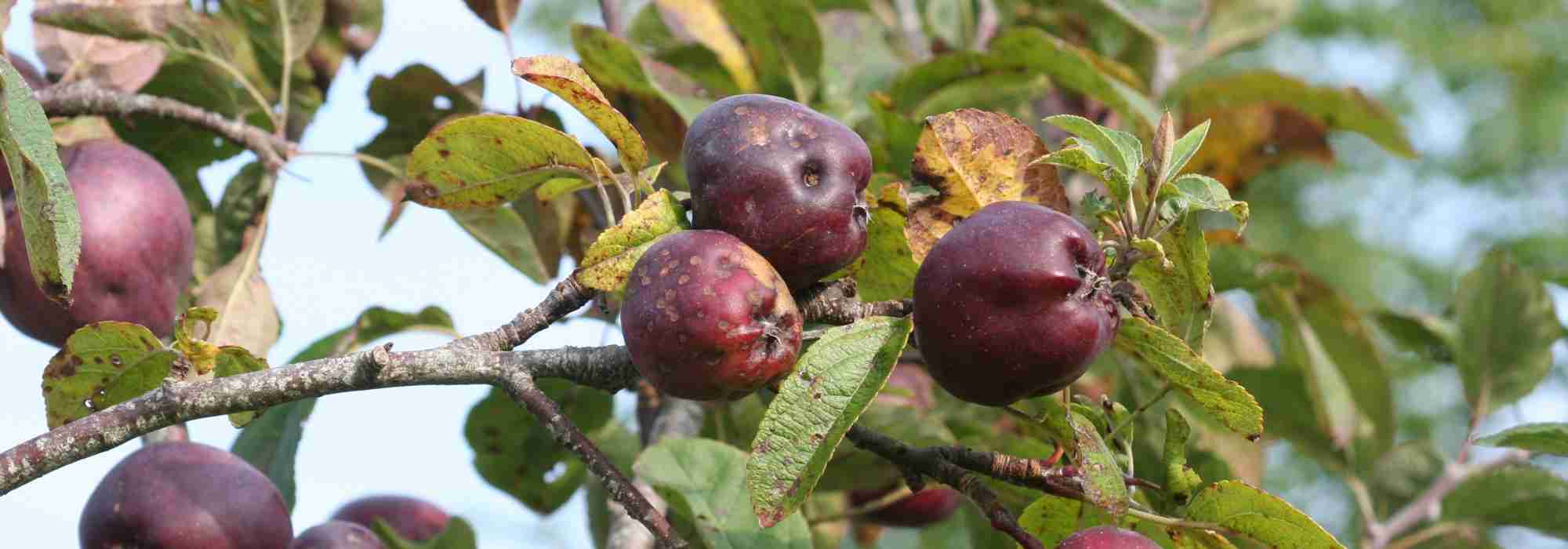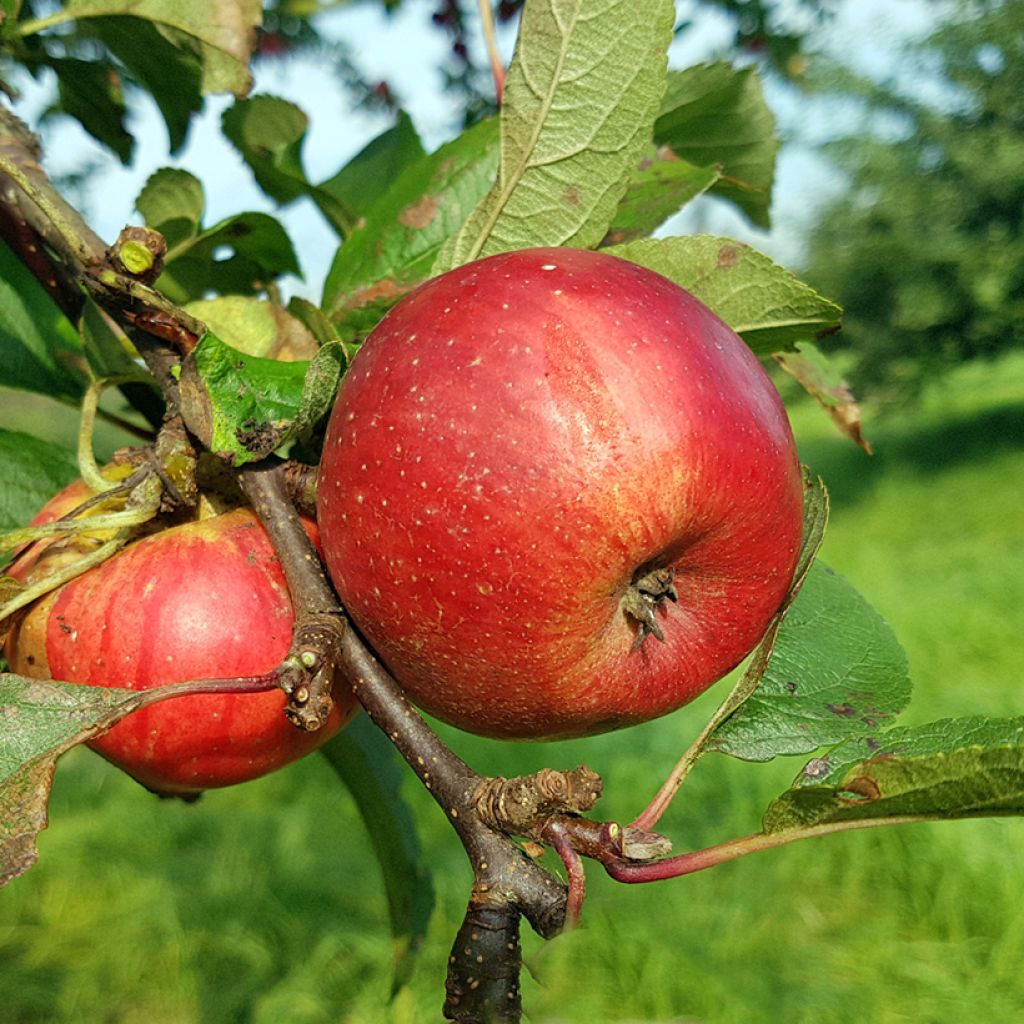

Malus domestica Kantówka Gdańska - Pommier domestique, Pommier commun
Apple Tree Kantówka Gdańska - Malus domestica
Malus domestica Kantówka Gdańska
Apple
Special offer!
Receive a €20 voucher for any order over €90 (excluding delivery costs, credit notes, and plastic-free options)!
1- Add your favorite plants to your cart.
2- Once you have reached €90, confirm your order (you can even choose the delivery date!).
3- As soon as your order is shipped, you will receive an email containing your voucher code, valid for 3 months (90 days).
Your voucher is unique and can only be used once, for any order with a minimum value of €20, excluding delivery costs.
Can be combined with other current offers, non-divisible and non-refundable.
Home or relay delivery (depending on size and destination)
Schedule delivery date,
and select date in basket
This plant carries a 6 months recovery warranty
More information
We guarantee the quality of our plants for a full growing cycle, and will replace at our expense any plant that fails to recover under normal climatic and planting conditions.
Description
The 'Kantówka Gdańska' Apple Tree is an old variety dating back to 1760, likely of Dutch origin, later cultivated as a local variety in Poland, Bohemia, and Moravia. The fruits are angular, characteristic of Calvilles. They are of medium size, spherical and ribbed in shape. The apple skin is smooth, oily, green-yellow with a carmine hue covering almost the entire fruit at ripeness. The yellowish-white flesh is juicy, tender, slightly sour, and aromatic. It is a delicious cooking apple. Self-sterile, this apple tree requires the presence of a pollinator.
The Malus domestica 'Kantówka Gdańska', also called 'Roode Kant' and 'Danziger Kantapfel' is an old variety also cultivated in Germany, Austria, Russia, and Scandinavia. This Apple Tree has a spreading habit, reaching approximately 4 to 5 m in height and 3 to 4 m in spread at maturity. With relatively strong growth, it forms a crown that is initially upright, then spherical, moderately dense, with numerous branches. Its foliage consists of large, ovate, deeply dentate, brownish-green leaves on top, greenish-white underneath. It is a variety very hardy tree but susceptible to Apple Scab, but less so to Powdery Mildew. It is said to be self-sterile, which is why the presence of apple trees flowering at the same time is necessary. The varieties Bankroft, Boiken, Idared, Golden Delicious, Oberland Raspberry, Spartan, Starking, Starkrimson, Wealthy are suitable cross-pollinators.
The 'Kantówka Gdańska' Apple Tree is a fairly vigorous variety, with a late, moderately abundant and generally alternate fruiting period. The fruit reaches its harvest ripeness towards the end of September. The fruit is ready for consumption in October.
This apples can be eaten raw, but are ideal when cooked in compotes, pastries, or as an accompaniment to savoury dishes, with black pudding or pork. They are also perfect for making juice. Easy to consume, the apples provide great satiety.
The apples can be stored for part of the winter. Storage can be done in a cool, clean place, away from light at a temperature of around 8 to 10°C or in an airtight cold room at 1 to 3°C. The apple releases ethene, a gas that promotes fruit ripening. To speed up the ripening of your other fruits or vegetables, place your apples right next to them.
Very popular thanks to its fruits, the apple tree finds its place in the garden for the enjoyment of young and old alike. Among a wide range of apple trees, it is easy to find the variety that best suits your wishes.
Apple Tree Kantówka Gdańska - Malus domestica in pictures
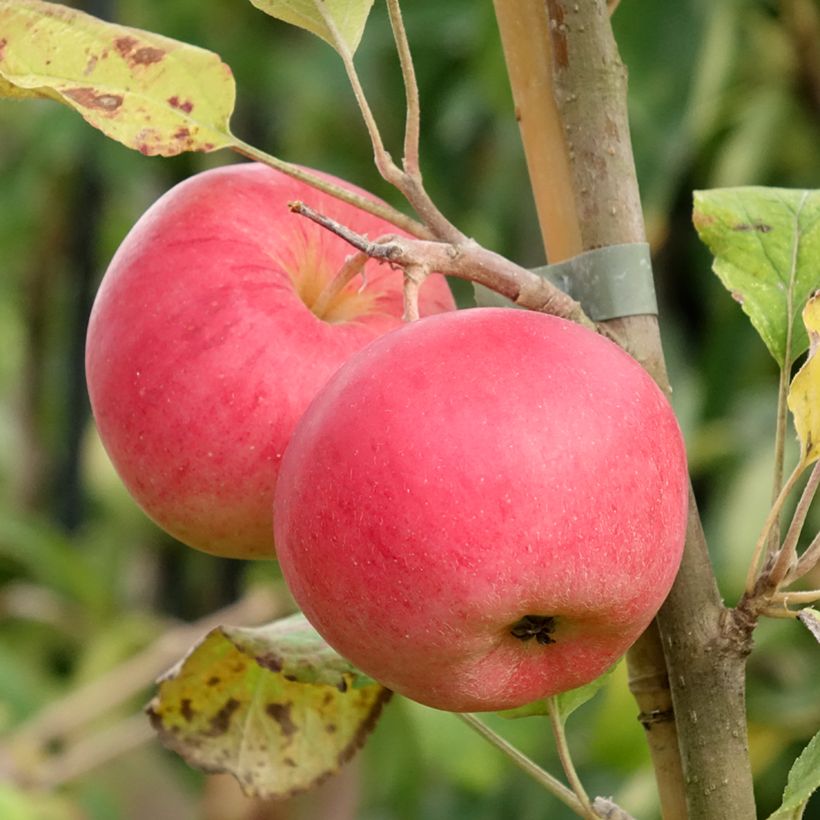

Plant habit
Fruit
Flowering
Foliage
Botanical data
Malus
domestica
Kantówka Gdańska
Rosaceae
Apple
Malus domestica Roode Kant, Danziger Kantapfel, Calleville de Dantzick
Northern Europe
Planting and care
Choose a sunny spot for your Kantówka Gdańska Apple Tree ; the soil can be slightly chalky or acidic, but not excessively so. Dig a wide planting hole at least 3 times the volume of the root ball. Simultaneously add organic matter (compost, leaf mould...) and a base fertiliser such as ground horn. Do not bury the graft junction. Stake if necessary. For apple trees planted in isolation and exposed to wind, it may be beneficial to stake them by setting up a guy-wire system: plant 3 stakes in a triangle 50 cm around the trunk, join them with pieces of wood. Protect the bark with a piece of rubber, for example, and attach the stakes to the trunk with metal wires. Water generously, even in winter, even if it rains. Fruit trees are ideally planted between October and March, outside of frost periods. Container-grown plants can be planted all year round except during periods of extreme heat or frost.
In winter, you can add a small spadeful of wood ash rich in potash at the base of the tree and lightly incorporate it into the surface of the soil, to improve fruiting. The Apple Tree may be susceptible to various diseases and pests. To minimise risks, space trees sufficiently, plant mixed-species hedges, set up nest boxes or insect shelters to attract beneficial wildlife. In short: prioritise diversity. The main diseases affecting Apple Trees are scab (brown spots on the leaves), brown rot (wilting of flowers and fruit rot on the tree), and powdery mildew (white felting on the leaves). For these three cases, preventive action is preferred by spraying a horsetail decoction; as a last resort and during severe attacks, a curative treatment with a Bordeaux mixture can be applied. As for pests, the codling moth (or fruit worm) is a small caterpillar hatched from a moth's eggs which burrows into the fruit. To address this, it is best to act preventively by attracting tits and bats by hanging nest boxes. In case of aphid infestations, spray a solution based on tar soap.
During harvest in September-October, only keep picked (not fallen) fruit. For optimal storage, it is advisable to place apples with their stalks facing downwards, in crates or trays. Choose a location that is preferably completely dark, dry, and cool, but frost-free.
Planting period
Intended location
Care
Planting & care advice
This item has not been reviewed yet - be the first to leave a review about it.
Haven't found what you were looking for?
Hardiness is the lowest winter temperature a plant can endure without suffering serious damage or even dying. However, hardiness is affected by location (a sheltered area, such as a patio), protection (winter cover) and soil type (hardiness is improved by well-drained soil).

Photo Sharing Terms & Conditions
In order to encourage gardeners to interact and share their experiences, Promesse de fleurs offers various media enabling content to be uploaded onto its Site - in particular via the ‘Photo sharing’ module.
The User agrees to refrain from:
- Posting any content that is illegal, prejudicial, insulting, racist, inciteful to hatred, revisionist, contrary to public decency, that infringes on privacy or on the privacy rights of third parties, in particular the publicity rights of persons and goods, intellectual property rights, or the right to privacy.
- Submitting content on behalf of a third party;
- Impersonate the identity of a third party and/or publish any personal information about a third party;
In general, the User undertakes to refrain from any unethical behaviour.
All Content (in particular text, comments, files, images, photos, videos, creative works, etc.), which may be subject to property or intellectual property rights, image or other private rights, shall remain the property of the User, subject to the limited rights granted by the terms of the licence granted by Promesse de fleurs as stated below. Users are at liberty to publish or not to publish such Content on the Site, notably via the ‘Photo Sharing’ facility, and accept that this Content shall be made public and freely accessible, notably on the Internet.
Users further acknowledge, undertake to have ,and guarantee that they hold all necessary rights and permissions to publish such material on the Site, in particular with regard to the legislation in force pertaining to any privacy, property, intellectual property, image, or contractual rights, or rights of any other nature. By publishing such Content on the Site, Users acknowledge accepting full liability as publishers of the Content within the meaning of the law, and grant Promesse de fleurs, free of charge, an inclusive, worldwide licence for the said Content for the entire duration of its publication, including all reproduction, representation, up/downloading, displaying, performing, transmission, and storage rights.
Users also grant permission for their name to be linked to the Content and accept that this link may not always be made available.
By engaging in posting material, Users consent to their Content becoming automatically accessible on the Internet, in particular on other sites and/or blogs and/or web pages of the Promesse de fleurs site, including in particular social pages and the Promesse de fleurs catalogue.
Users may secure the removal of entrusted content free of charge by issuing a simple request via our contact form.
The flowering period indicated on our website applies to countries and regions located in USDA zone 8 (France, the United Kingdom, Ireland, the Netherlands, etc.)
It will vary according to where you live:
- In zones 9 to 10 (Italy, Spain, Greece, etc.), flowering will occur about 2 to 4 weeks earlier.
- In zones 6 to 7 (Germany, Poland, Slovenia, and lower mountainous regions), flowering will be delayed by 2 to 3 weeks.
- In zone 5 (Central Europe, Scandinavia), blooming will be delayed by 3 to 5 weeks.
In temperate climates, pruning of spring-flowering shrubs (forsythia, spireas, etc.) should be done just after flowering.
Pruning of summer-flowering shrubs (Indian Lilac, Perovskia, etc.) can be done in winter or spring.
In cold regions as well as with frost-sensitive plants, avoid pruning too early when severe frosts may still occur.
The planting period indicated on our website applies to countries and regions located in USDA zone 8 (France, United Kingdom, Ireland, Netherlands).
It will vary according to where you live:
- In Mediterranean zones (Marseille, Madrid, Milan, etc.), autumn and winter are the best planting periods.
- In continental zones (Strasbourg, Munich, Vienna, etc.), delay planting by 2 to 3 weeks in spring and bring it forward by 2 to 4 weeks in autumn.
- In mountainous regions (the Alps, Pyrenees, Carpathians, etc.), it is best to plant in late spring (May-June) or late summer (August-September).
The harvesting period indicated on our website applies to countries and regions in USDA zone 8 (France, England, Ireland, the Netherlands).
In colder areas (Scandinavia, Poland, Austria...) fruit and vegetable harvests are likely to be delayed by 3-4 weeks.
In warmer areas (Italy, Spain, Greece, etc.), harvesting will probably take place earlier, depending on weather conditions.
The sowing periods indicated on our website apply to countries and regions within USDA Zone 8 (France, UK, Ireland, Netherlands).
In colder areas (Scandinavia, Poland, Austria...), delay any outdoor sowing by 3-4 weeks, or sow under glass.
In warmer climes (Italy, Spain, Greece, etc.), bring outdoor sowing forward by a few weeks.




































